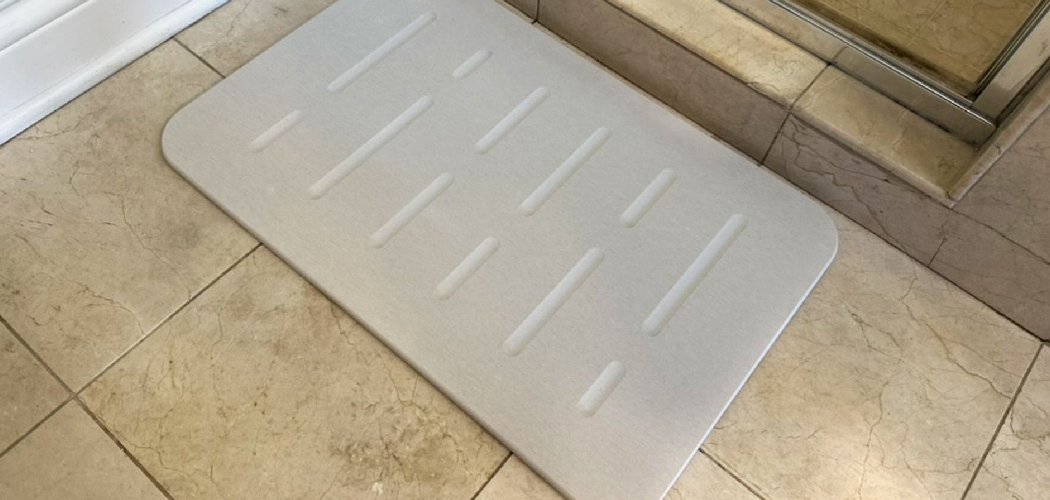Are you looking to add a unique and natural touch to your bathroom? Stone bath mats are the perfect option.
Stone bath mats are a stylish and functional alternative to traditional fabric bath mats, offering a sleek design that enhances bathroom aesthetics. These mats are typically made from natural stone materials like diatomaceous earth or pumice, which are known for their highly absorbent properties. The unique porous nature of stone allows it to quickly absorb and evaporate water, leaving the surface dry and safe to step on shortly after use. Unlike traditional mats that trap moisture and can harbor bacteria, stone bath mats promote hygiene by reducing dampness and inhibiting the growth of mold and mildew.
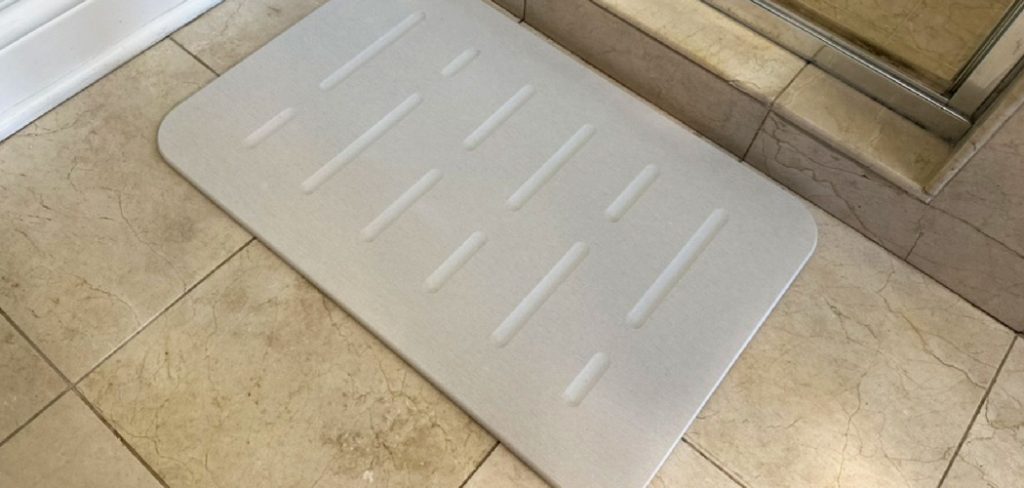
In this guide on how do stone bath mats work, we will explore the benefits and maintenance of these mats.
What Will You Need?
Before we dive into the working mechanism of stone bath mats, let’s take a look at the items you will need to maintain and clean your mat:
- Stone bath mat
- Warm water
- Mild soap or detergent
- Soft bristle brush or sponge
- Towel for drying
Once you have gathered all the necessary items, let’s understand how stone bath mats work.
10 Easy Steps on How Do Stone Bath Mats Work
Step 1. Unpack and Place the Mat:
When you first receive your stone bath mat, carefully unpack it to avoid any damage. The mat might feel heavier than traditional fabric mats, so handle it carefully. Choose a suitable location for your stone bath mat, ideally adjacent to your shower or bathtub. Ensure the surface is flat and stable to allow complete contact with the floor, enhancing its absorptive efficiency. Placing the mat in a spot with good airflow will also aid in faster drying, maximizing its quick-drying capabilities. Remember to periodically rotate or move your mat slightly to distribute wear evenly, maintaining its appearance and functionality over time.
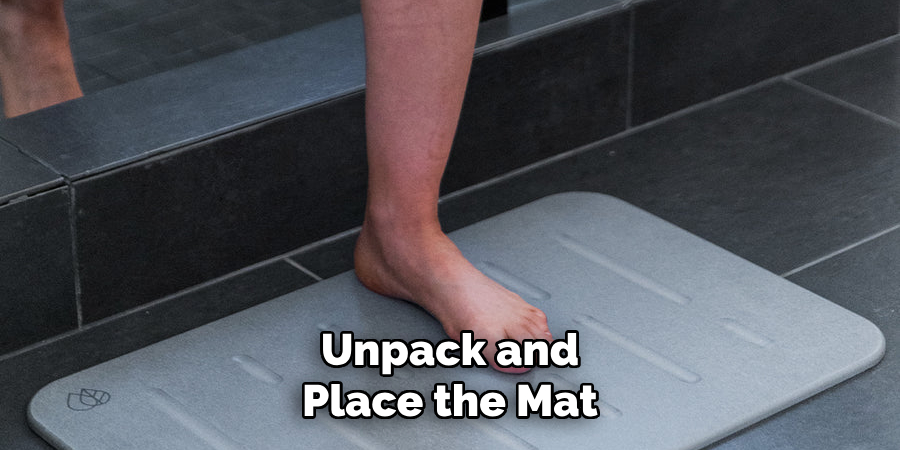
Step 2. Check the Stability:
Once your stone bath mat is in place, ensure it sits securely on the floor to prevent any slipping or shifting. A stable mat will increase safety and enhance its ability to absorb water effectively. You can verify stability by gently pressing down on different areas of the mat. If any movement is detected, reposition the mat or place a non-slip pad underneath to keep it anchored. Taking these precautions will ensure that your stone bath mat functions at its best while providing a safe environment in your bathroom.
Step 3. Regular Cleaning:
Establish a regular cleaning routine to maintain the stone bath mat’s efficiency and longevity. Begin by using warm water and a mild soap or detergent to remove any surface residue or stains. Gently scrub the mat using a soft bristle brush or sponge to avoid scratching the stone’s surface while cleaning all areas thoroughly. Rinse the mat with clean water to wash away any soap residue, and then use a towel to pat it dry or leave it to air dry completely. Regular cleaning not only sustains the mat’s quick-drying properties but also prevents the accumulation of dirt and debris that could impact its performance over time.
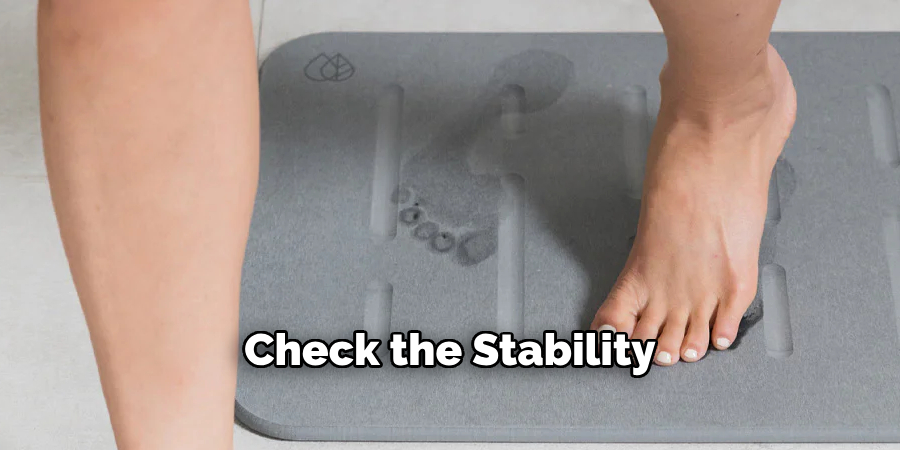
Step 4. Avoid Harsh Chemicals:
When cleaning your stone bath mat, it’s essential to avoid using harsh chemicals or abrasive cleaners. These substances can damage the natural stone surface, diminishing its absorbency and durability. Instead, stick to gentle, natural, stone-friendly cleaning solutions, such as diluted vinegar or specialized stone cleaners in stores. If you encounter stubborn stains, apply a gentle cleaning paste made from baking soda and water, letting it sit briefly before wiping it away. Adhering to these gentle cleaning practices ensures that your stone bath mat remains practical and aesthetically pleasing for years.
Step 5. Dry Thoroughly After Use:
After stepping out of the shower or bathtub, it’s crucial to ensure that your stone bath mat has the opportunity to dry completely. While the mat’s natural absorptive properties will wick away moisture quickly, giving it additional time to air dry will further enhance its durability and effectiveness. Place the mat in a well-ventilated area with plenty of air circulation to facilitate this process. Consider using a fan or dehumidifier in more humid environments to aid in drying. By allowing your stone bath mat to dry thoroughly after each use, you can maintain its quick-drying abilities while preventing any potential buildup of moisture-related issues.
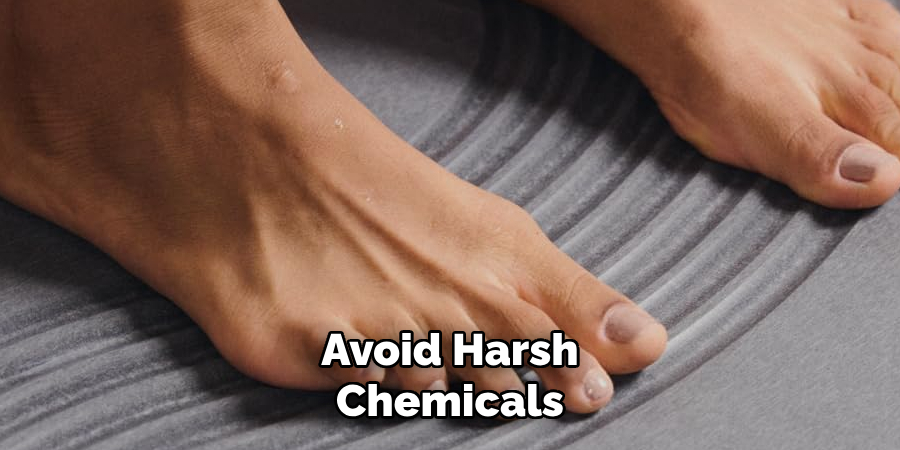
Step 6. Rotate the Mat Regularly:
To ensure even wear and maintain the effectiveness of your stone bath mat, rotate it regularly. This is particularly important in high-traffic bathrooms where certain mat sections might be used more frequently than others. By rotating the mat every few weeks, you evenly distribute the weight and pressure across the surface, which helps preserve its structure and appearance. Additionally, this practice prevents any area from becoming overly worn or developing grooves that might detract from the mat’s aesthetic appeal. Regular rotation helps extend the life of your mat, ensuring it continues to function optimally.
Step 7. Inspect for Damage
Periodically inspect your stone bath mat for any signs of damage or wear, such as cracks or chips, which can affect both its appearance and functionality. If you notice any imperfections, address them promptly to prevent further deterioration. Minor chips or scratches can sometimes be smoothed out using fine sandpaper or a similar abrasive, but for more significant damage, it may be necessary to replace the mat. Regular inspection ensures that your stone bath mat maintains its structural integrity and provides a safe, slip-free surface in your bathroom. Taking these proactive measures will help you enjoy the full range of benefits your stone bath mat offers over the long term.
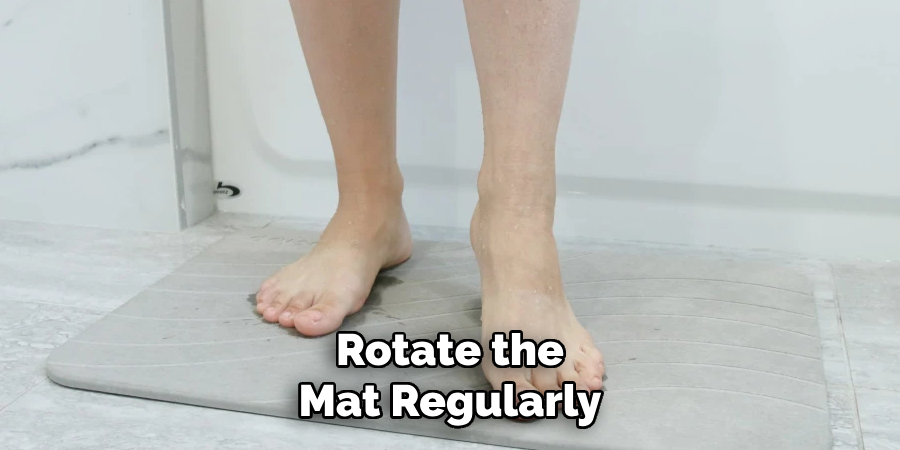
Step 8. Avoid Overloading the Mat
Not overloading the stone bath mat with excessive moisture or heavy objects is essential. The mat is designed to absorb water efficiently, but too much humidity at once can overwhelm its capacity and affect drying time. Step onto the mat one foot at a time to prevent this, allowing the stone surface to absorb moisture gradually. Avoid placing heavy items on the mat, as they can cause stress fractures or damage the surface. Handling the mat gently and using it as intended will help maintain its absorptive capabilities and structural integrity, ensuring it functions effectively for many years.
Step 9. Store Properly When Not in Use
If you need to store your stone bath mat for an extended period, ensure it’s protected from environmental factors that could compromise its condition. Begin by cleaning the mat thoroughly and permitting it to dry completely to prevent mold or mildew growth. Store the mat in a cool, dry location away from direct sunlight, which could fade or weaken the stone surface over time. Keep it in a protective cover or wrapping to shield it from dust and accidental damage. Proper storage ensures that when you next use your stone bath mat, it will be in optimal condition and ready to provide its full benefits.
Step 10. Maintain Proper Ventilation
To further enhance the longevity and effectiveness of your stone bath mat, it’s crucial to maintain proper ventilation in your bathroom. Adequate ventilation helps reduce humidity levels and accelerates drying times, preventing potential moisture-related issues such as mold or mildew. Ensure that your bathroom has a working exhaust fan or open a window during and after showers to allow moisture to dissipate. This simple measure can significantly prolong the life of your stone bath mat, keeping it dry, hygienic, and in excellent condition.
Following these steps, you can ensure that your stone bath mat remains a functional and aesthetic addition to your bathroom for years.
5 Things You Should Avoid
- Using Excessive Water: Stone bath mats are designed to absorb moisture efficiently, but over-saturating them can hinder their effectiveness and lead to prolonged drying times.
- Neglecting Regular Cleaning: Although stone mats naturally resist mold and mildew, failing to clean them periodically can accumulate residue and diminish their absorbency over time.
- Placing on Uneven Surfaces: Ensure your stone bath mat is placed on a flat surface to prevent cracking or chipping, which can occur if too much pressure is applied unevenly.
- Skip the Bleach: While bleach is a joint household cleaning agent, it can damage the natural color and pattern of stone bath mats. Instead, opt for milder cleaning solutions specifically designed for stone.
- Forgetting to Dry Between Uses: After use, hang or lay the stone bath mat in an area with good air circulation to allow it to dry fully. This will prevent any musty odors and prolong its lifespan.
Conclusion
Stone bath mats draw moisture away from the surface, thanks to the porous nature of their material, typically diatomaceous earth or similar composites.
These materials have naturally occurring micropores that absorb water quickly, allowing the mat to dry efficiently after use. The process helps to keep the bathroom floor dry and reduces the potential for slip hazards. Additionally, the stone’s natural properties resist mold and mildew growth, promoting hygiene and low maintenance.
Hopefully, these tips on how do stone bath mats work will help you maintain your stone bath mat and prolong its lifespan so that it can continue to provide a safe and stylish solution for your bathroom needs. So go ahead and indulge in some luxury while also being mindful of caring for your stone bath mat properly. Happy bathing!

